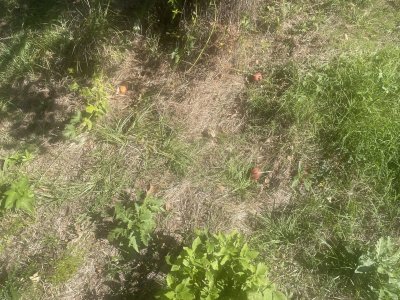FarmerDan
5 year old buck +
Presumably we are all of a like mind when it comes to the primary reason for this forum. It's about wildlife (deer) habitat improvement. Or, let's assume so. We have come here to share our experiences and to learn from others.
As I sit in the sun I wonder what I've learned and how my thoughts and practices have changed. If you have learned something and put it into practice share it here?
I will start.
1. Throw and mow. I would broadcast seed but never would have thought about the mulch cover benefit. I'm still open to discussion about where and how and why it works.
2. Lickcreek. His ideas and solutions were novel and remain golden for me.
3. I am a grower. My main interest if food plots. Never gave much thought to total habitat management. I think I know good habitat and bad habitat, but I never gave much thought to managing it. Now it's a least in the back of my mind and, I know, a very important aspect of managing land use of whitetails.
4. Brassicas. I still don't plant much of it. But it is part of my curiosity now.
5. Regenerative ag. When I first came across someone's mention of it I didn't know what it meant.
6. Clethodim. Outside of food plotting I have no use for it and didn't really know much about it. I do now!
7. The debate about tillage. The debate continues at least in my head.
No doubt there are many other tips and pointers I have borrowed. Tip of the cap to the admins, all the writers and all the readers!
And you?
As I sit in the sun I wonder what I've learned and how my thoughts and practices have changed. If you have learned something and put it into practice share it here?
I will start.
1. Throw and mow. I would broadcast seed but never would have thought about the mulch cover benefit. I'm still open to discussion about where and how and why it works.
2. Lickcreek. His ideas and solutions were novel and remain golden for me.
3. I am a grower. My main interest if food plots. Never gave much thought to total habitat management. I think I know good habitat and bad habitat, but I never gave much thought to managing it. Now it's a least in the back of my mind and, I know, a very important aspect of managing land use of whitetails.
4. Brassicas. I still don't plant much of it. But it is part of my curiosity now.
5. Regenerative ag. When I first came across someone's mention of it I didn't know what it meant.
6. Clethodim. Outside of food plotting I have no use for it and didn't really know much about it. I do now!
7. The debate about tillage. The debate continues at least in my head.
No doubt there are many other tips and pointers I have borrowed. Tip of the cap to the admins, all the writers and all the readers!
And you?
